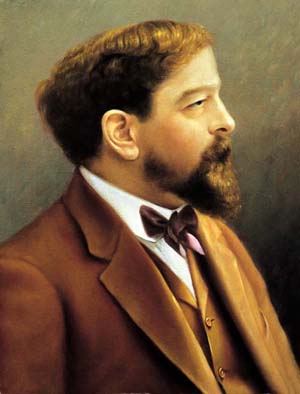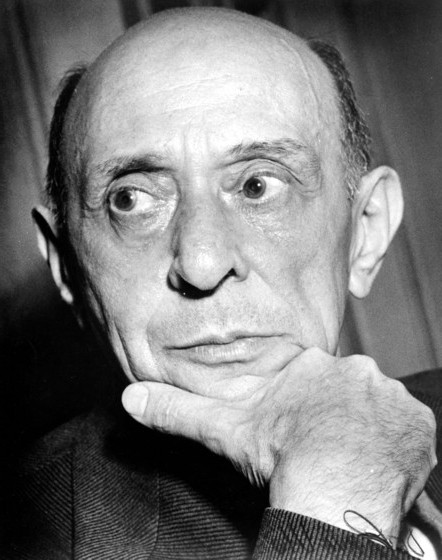Music of the 20th Century
Introduction
What is Impressionism?
Who are the Impressionistic Composers?
Besides the two great impressionist composers, Claude Debussy and Maurice Ravel, other composers who composed in what has been described as impressionist style include Frederick Delius, Isaac Albéniz, Enrique Granados, Erik Satie, Alexander Scriabin, Lili Boulanger, Federico Mompou, Charles Tomlinson Griffes and Karol Szymanowski.
Impressionism
- Claude Monet (Impression - Sunrise)
-

- Avoids hard outline of form or realism
- Focuses on effect of light and color that leave a momentary impressionism
- Debussy blurs forms, rhythms, and tonality
- Influenced by Indonesian classical music performed by Gamelan
- Orchestra mainly made of gongs and chime

- 1862 - 1918
- Educated at the Paris Conservatoire
- Mostly associated with Impressionism in music
- Used pentatonic scales (5 - tone scale)
- e.g. (C# - D# - F# - G# - A#) - Asian sounding
- Used whole - tone scales
- Scale made up entirely of whole steps
- e.g. (C - D - E - F# - G# - A#)
- Dreamy or water - like quality
- In music, expressionism is a mainly German/Austrian affair, closely linked to the second Viennese school (Arnold Schönberg, Alban Berg and Anton Webern), and atonality. Stylistically, it’s the follow-up of late-romantic music. Emotions are taken to the extreme, leading to disturbing, unsettling and sometimes violent music.
- The term Expressionism was originally borrowed from visual art and literature. Artists created vivid pictures, distorting colours and shapes to make unrealistic images that suggested strong emotions. Expressionist composers poured intense emotional expression into their music exploring their subconscious mind.
- A high level of dissonance
- Extreme contrasts of dynamics
- Constantly changing textures
- ‘Distorted’ melodies and harmonies
- Angular melodies with wide leaps
Expressionism
Atonality
- Absence of a path hierarchy where all notes are equal in importance
- Tonality - Tonic path around which all other pitches are oriented (i.e. key of C major)

- 1874 - 1951
- Born in Vienna
- Strong admiration for German and Austrian music tradition
- First composer to abandon tonality
- Wrote first atonal piece in 1909, used recurring motives to give piece coherency
- Art that seeks expression of pure emotional states liberated form all repression, exploring dark, previously hidden emotions or pure and ecstatic emotional states once considered taboo
- Music that comes to terms with your fears, insanity, hysteria or other repressed emotions
- Pierrot Lunaire (Moonstruck Pierrot)
- Collection of expressionistic songs
- Centers around a clown, Pierrot, who is a representative of the misunderstood modern artist
- "Mondestrunken" (Moondrunk)
- Rondo form
- Expresses how the moon intoxicates the poet
- Night is dark and a lonely place
- For voice, piano, flute, violin, cello
- Schoenberg's singer uses Sprechstimme
- Means speaking voice
- Singer speaks but on certain distinct pitches
- reinforces the surreal quality of the text and music
Igor Stravinsky

- 1882 - 1971
- Studied with Rimsky - Korsakov
- Wrote ballets :
- The Firebird (1910)
- Petrushka (1911)
- The Rite of Spring (1913)
- Russian - Became French Citizen in 1934
- Immigrated in America in 1945
The Rite of Spring
- Premiere in Paris in 1913
- Riot broke out!
- Shocked and outraged at primitivism
- harsh dissonances
- Percussiveness
- pounding rhythms
- Introduction represents "Awakening of Nature" - (represented by solo bassoon)
- Introduction gives way to "tick - tock" figure - (violins play pizzicato 4-note ostinato)
- Strings pound out a dissonant chord with unexpected and irregular accents
- Can hear Rimsky-Korsakov's influence in orchestration
Aleatoric / Chance music
- Music by chance
Ex: 1. Experimentation with the magnetic tape (tape used in cassette tape)
by: cutting, splicing, etc.
2. Use of dice - Rolling of dice to come up with different notes to be used in a composition
John Cage

uAlso Known As:
John Milton Cage
Jr. was an American composer of the 20th century known for his innovative,
avant-garde ideas of creating and appreciating music.
uBorn:
September 5, 1912, his
father was the inventor and electrical engineer John Milton Cage. His mother
was the founder of the Lincoln Study Club and editor of the LA Times Women's
Club.
uBirthplace:
Los Angeles,
California
uDied:
August 12, 1992 in
New York, USA
Types of Compositions